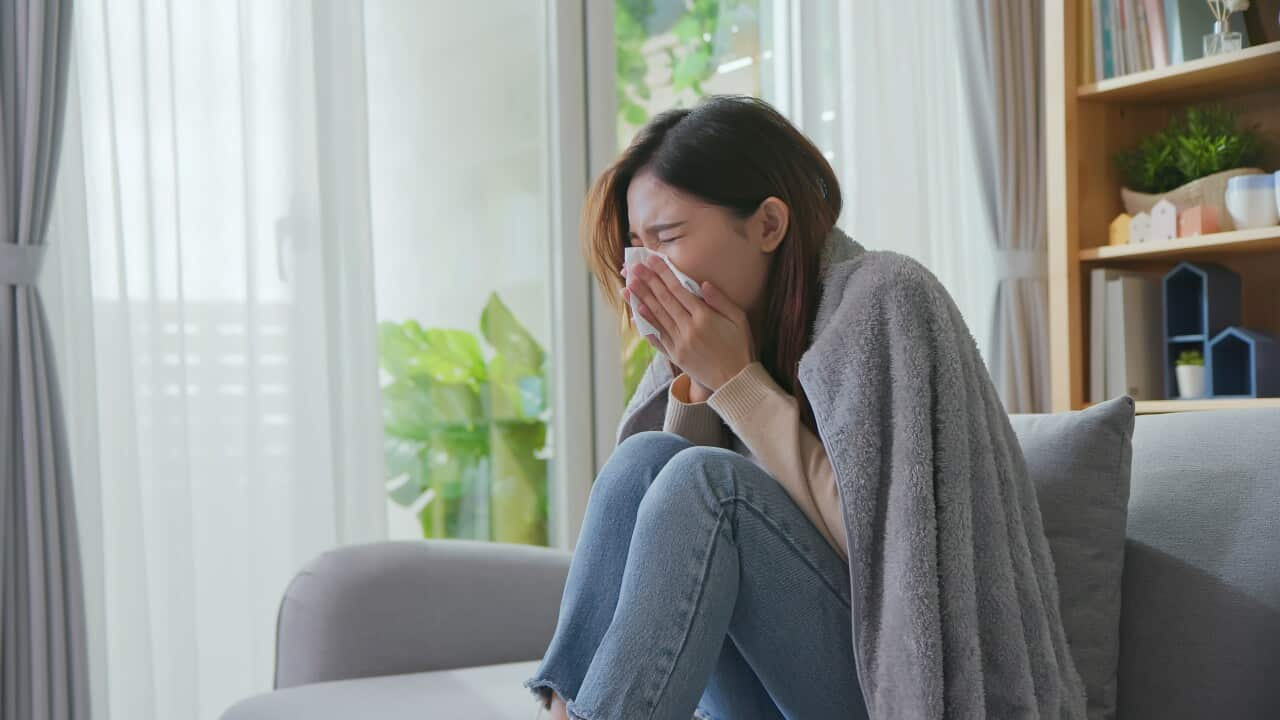As the days get longer, the weather gets warmer and flowers begin to bloom, many Australians are celebrating the beginning of Spring.
But for some, that also means, which comes with a side of sneezing, itching, a runny nose, and puffy eyes.
And this year, with an , experts have warned that allergy season could look a little different than usual.
Here's what you need to know.
What are seasonal allergies and when is allergy season?
Seasonal allergies and hay fever are reactions that occur at certain times of the year due to increased amounts of pollen in the air.
Symptoms can include sneezing, a blocked or runny nose, itchy or watery eyes, puffy eyes, snoring, and blocked or itchy ears.
Around one in five Australians are believed to experience seasonal allergies, and those who have also feel the effects.
Dr Edwin Lampugnani, aerobiologist and , said allergy season usually peaks in Spring when grasses are flowering.
"For many Australians, grass is a big problem because they have lots of allergens in them, and allergens cause hay fever and allergic rhinitis," he said.
"Allergy season is around September to December each year, with the peak being October to December as that’s when grass pollen is at its peak."
How does the weather impact allergies?
Weather patterns can help scientists anticipate the length and intensity of an allergy season.
Kira Hughes, a PhD candidate and research scientist at Deakin AIRwatch, said changes in weather can increase the threat of seasonal allergies flaring up.
These changes can occur day by day, or over a prolonged period of time.
Hughes said international studies have indicated climate change is also increasing the length of time pollen is in the air, meaning a longer allergy season.
“We have seen in studies … that the pollen season has actually extended by up to two weeks due to climate change,” she said.
“And with the La Niña event that happened over the last couple of years ... it actually pushed the pollen season forward, so instead of finishing at the end of December, it continued into January.”
What does El Niño mean for allergies?
Over the last three years, Australia has experienced a La Niña weather event, which meant cooler temperatures and increased rainfall compared to other years.
The extra rainfall meant many plants have thrived, triggering above-average amounts of pollen in the air and severe allergy seasons.
This year, the opposite climate pattern - known as El Niño - has been declared by the United Nations weather agency and Australia's Bureau of Meteorology.
El Niño typically leads to hotter, drier temperatures for much of the country.
Lampugnani said an El Niño year could mean two things for those with allergies.
"The first is, we are looking at an early start to the pollen season because we are seeing so much warm weather at the moment and we’ve still got lots of moisture in the ground which is causing lots of grass to grow," he said.
"In an El Niño year, if it’s very dry and there’s not enough rain around to support the growth of plants, particularly grasses, that might dictate an earlier end to the pollen season as well."

Spring is the peak season for allergies due to pollen in the air. Source: AAP / Moodboard
Thunderstorm asthma is triggered by the combination of storms and pollen in the air and can lead to shortness of breath, chest tightness, wheezing and persistent coughing.
"We could get a mix of hot air, cold air, and that pressure change can lead to thunderstorms, so there is a worry that we could have another event this year because of that," Hughes said.
"Bushfires release a lot of smoke, a lot of pollutants, and that could also prime people who are sensitised to pollen or have asthma to have really serious effects from an increased pollen season, and we might experience that this year."
What can allergy sufferers expect this season?
Lampugnani said the allergy season's early start could lead to an early finish, but said he is expecting an average number of "high pollen" days in 2023.
"The issue here is most people don’t tend to be prepared in September for the sorts of pollen we’re seeing at the moment," he said.
"It’s really dependent on whether we are going to be seeing that springtime rain … if that comes through, that’s going to change the seasonal outlook and it could end up being a much larger year than we’re otherwise expecting, and if it’s drier it’ll be a smaller year.
Hughes said it's likely that people who experience allergies are already feeling the pollen in the air and she expects the allergy season could be longer than average.
She advised those who experience allergies to check the Melbourne Pollen app or website daily from 1 October to be aware of which days are likely to trigger allergies.
"You'll know if it's going to be a low pollen day it's not going to be too bad, or if it's a high or extreme day, you know to avoid going outside if you can or take precautions like medication if you need to,"
"And if you suffer from asthma as well ... I would recommend speaking to a doctor to sort out an asthma action plan."



